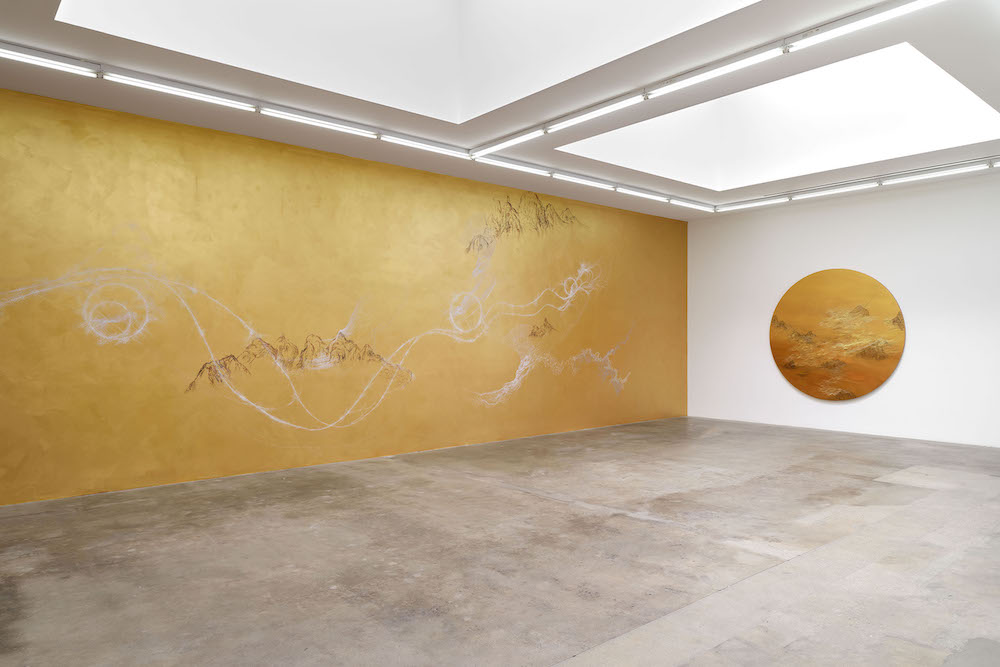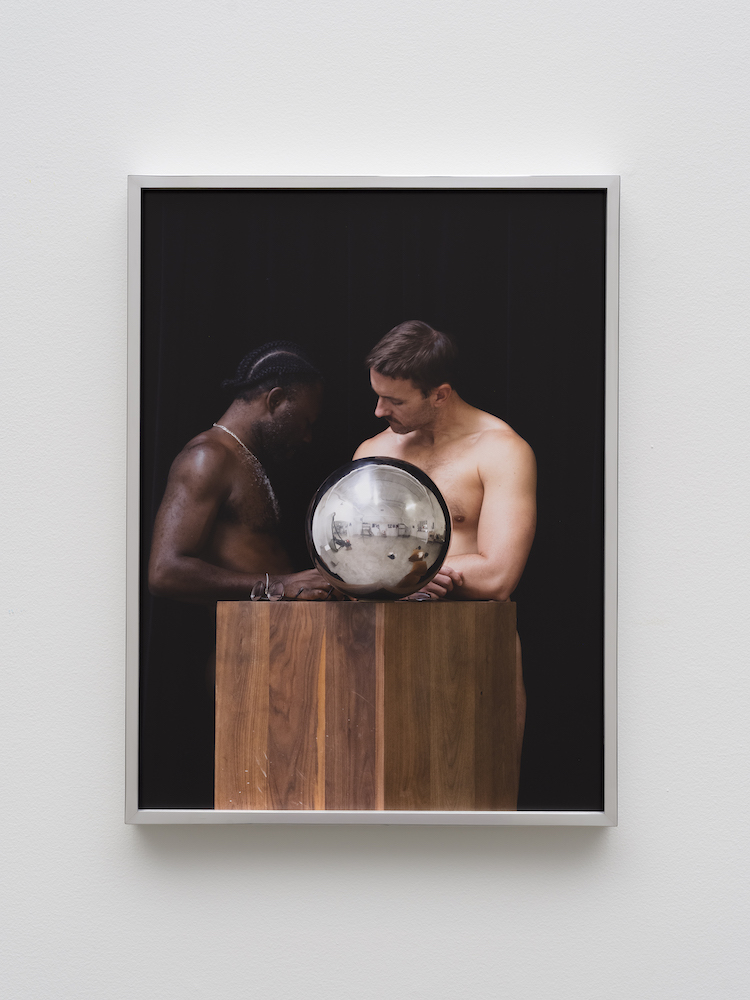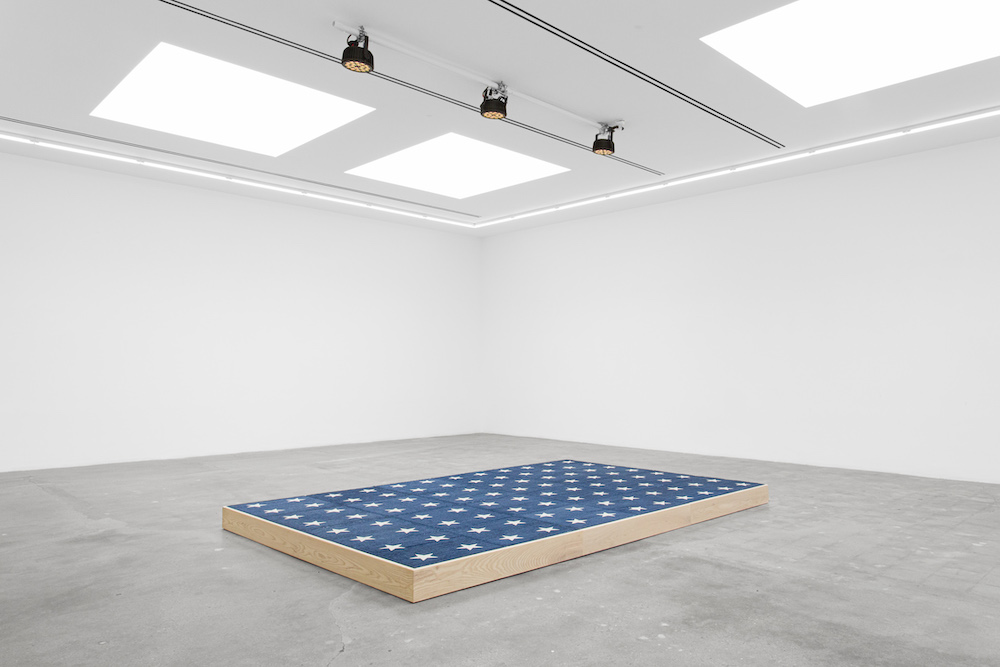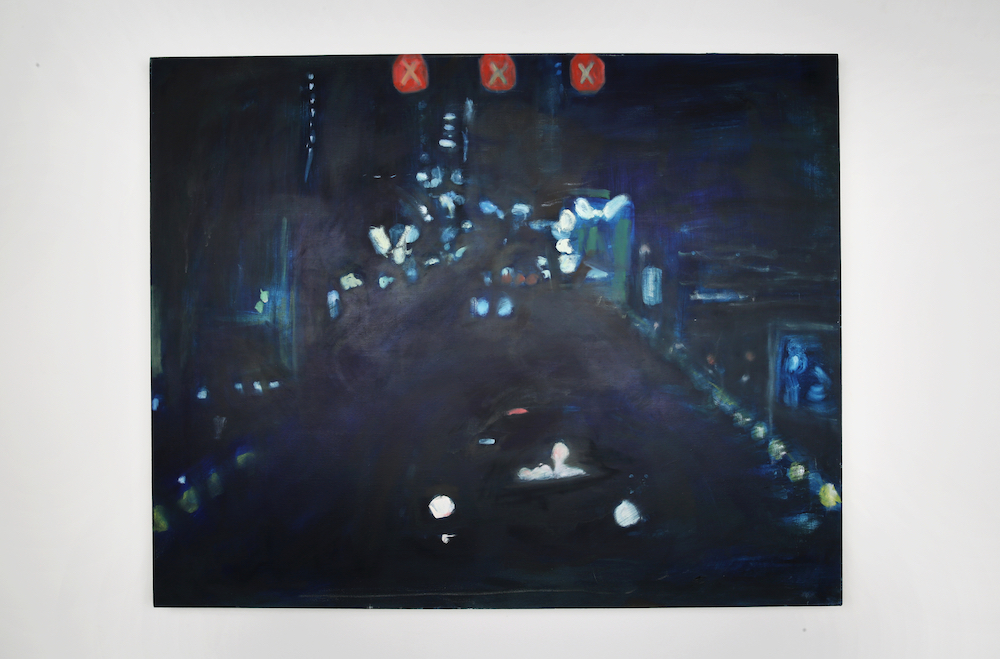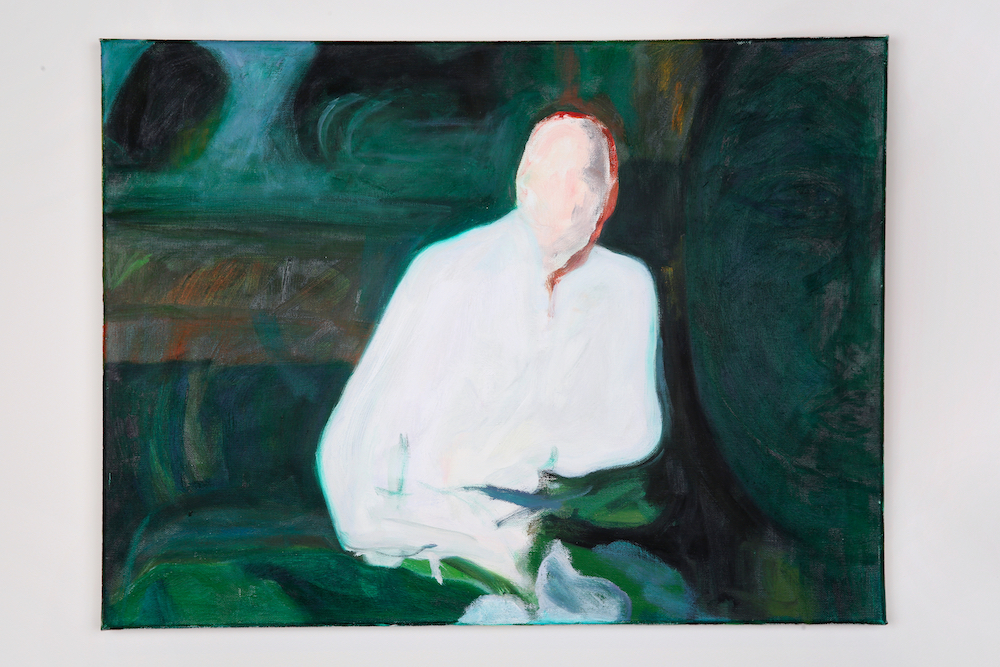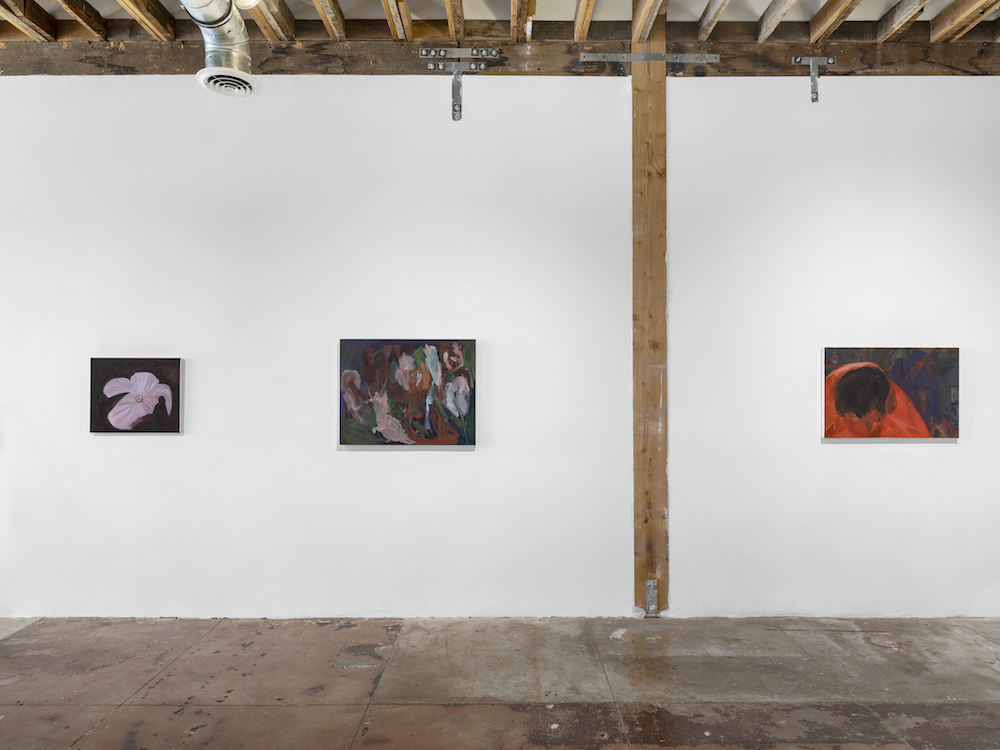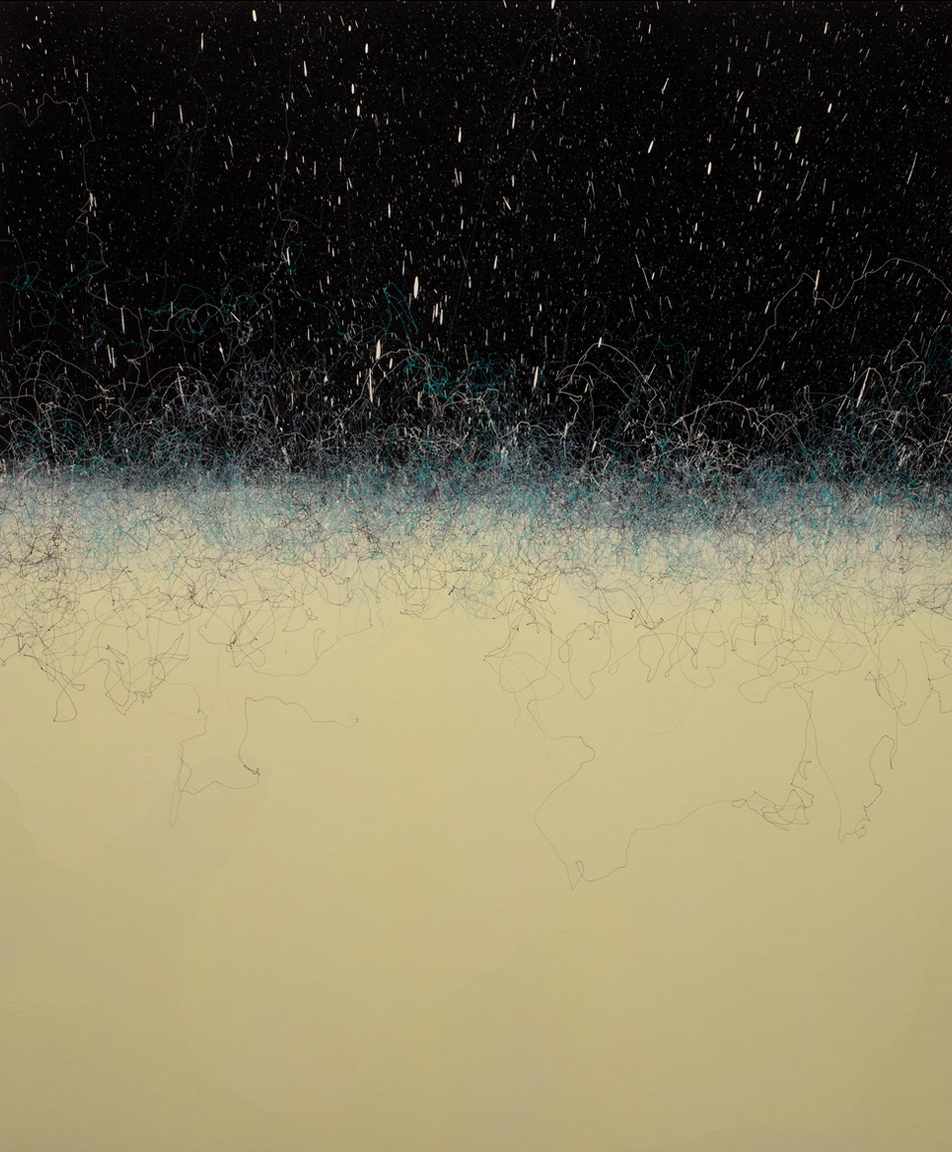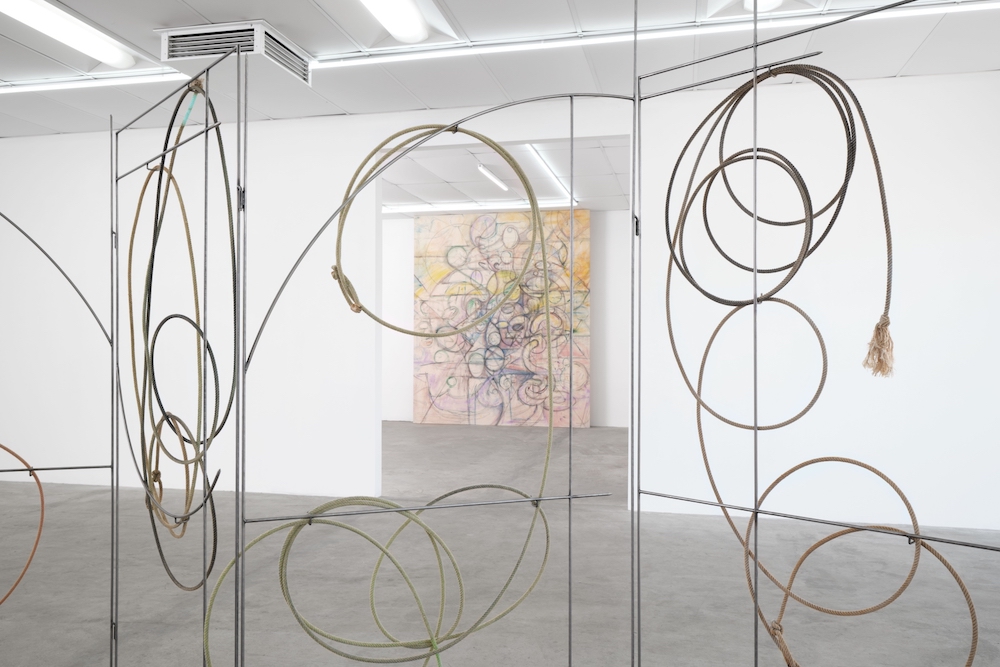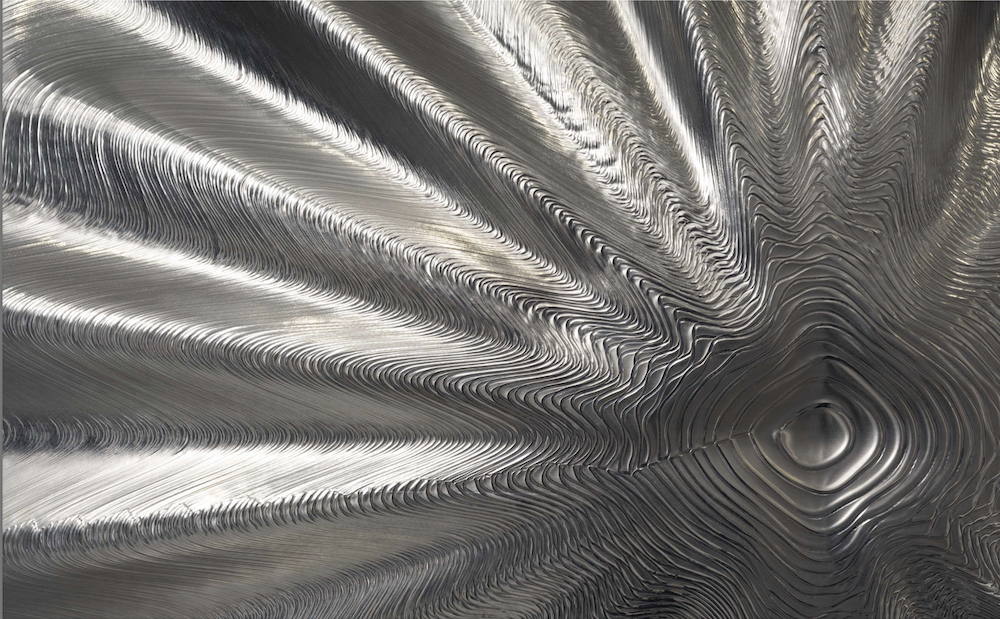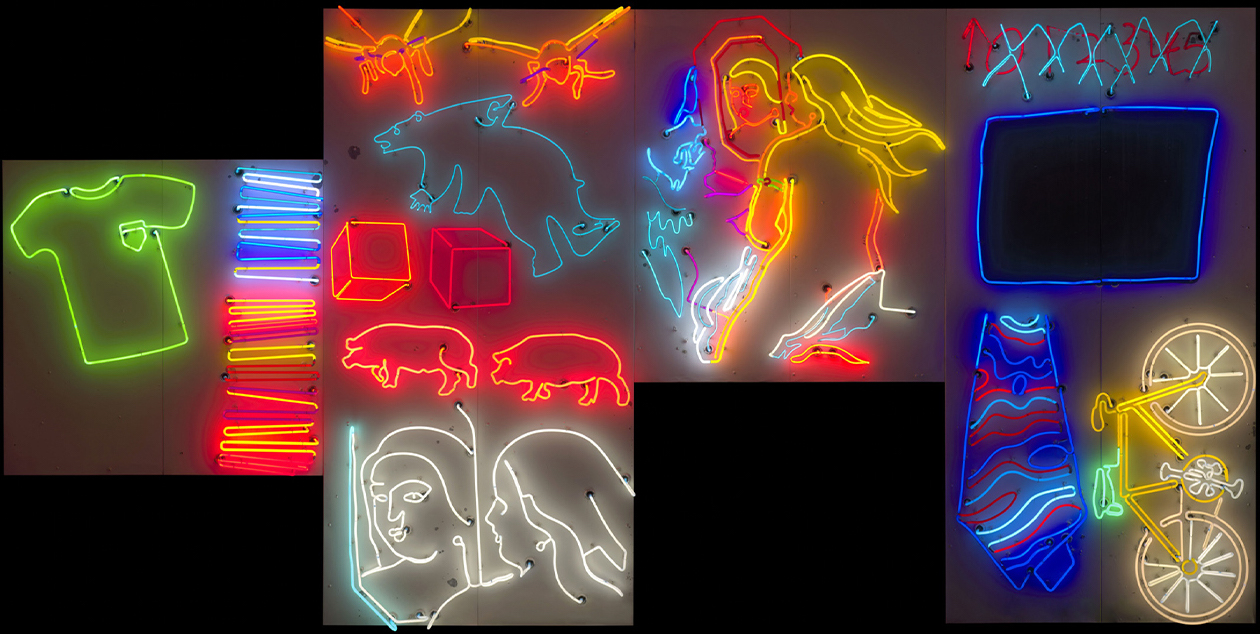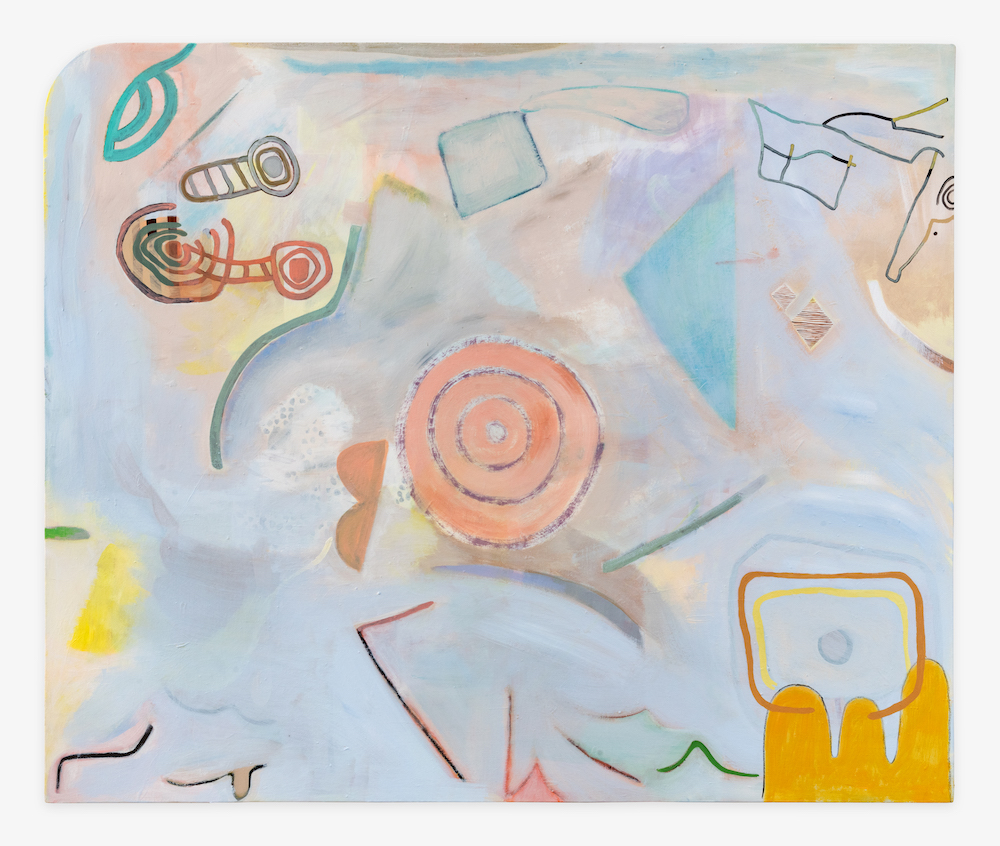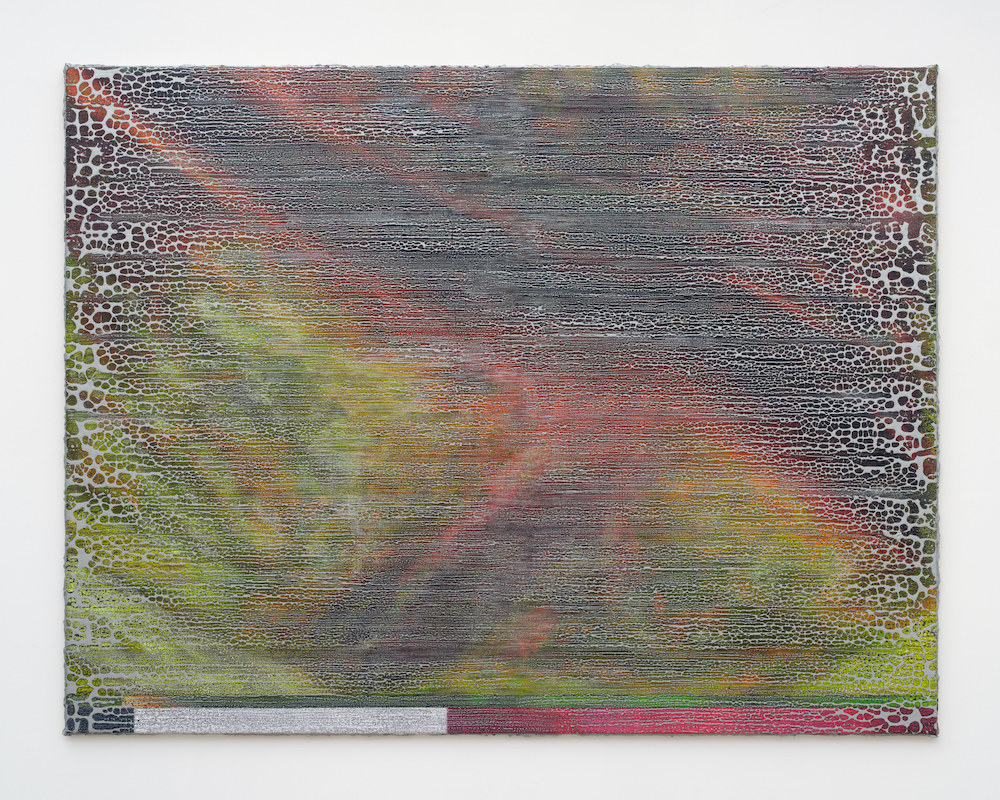Your cart is currently empty!
Tag: Elwyn Palmerton
-

Sandra Cinto
The delicate line-work in these semi-abstract sea/land/sky-scapes is incredibly controlled, almost to a fault. It doesn’t leave much room for the unexpected. This might be okay except that the overall vocabulary of forms is a bit too constrained. For instance, the squiggly undulating seas, asterisk-like stars, and meandering triangular lattice-works all start to feel schematic—like well-practiced versions of familiar forms. The glitzy gold backgrounds and matte neutral tones split the difference between tasteful and ostentatious, but do not land anywhere particularly original.
Sandra Cinto: Prelude to the Sun
Tanya Bonakdar
1010 N. Highland Ave.,
Los Angeles, CA 90038
On view through July 2, 2025 -

Paul Mpagi Sepuya
at VielmetterThe title “positioner” refers to the photographer’s inclusion of himself in several of these photos as he positions his models, most of which are queer men and women. These are a reflection on studio portraiture as a specific social context. They explore the relationship of photographer to model, not just on an interpersonal level, but as it reverberates within the context of the studio and the artist’s practice. The content is not intimacy, per se, but the care, communication, and technique that go into capturing it. These are continually rewarding on conceptual, formal, and psychological levels, which reveal how all of the above are also intertwined.
Paul Mpagi Sepuya: POSITIONER
Vielmetter Los Angeles
1700 S. Santa Fe Ave., #101
Los Angeles, CA 90021
On view through July 19, 2025 -

Jill Magid
at Various Small FiresThe centerpiece of this show is a carpeted wooden platform, covered with white on blue stars like an American flag. Various Small Fires’ owner, Esther Kim Varet, is running for Congress, and this mini-stage is meant for use by her campaign. What Varet and artist Jill Magid offer is a call to action—something which most political art fatally lacks. This is a welcome corrective to art that thinks making a political statement counts as doing politics. There are also twenty heart sculptures, cast in grey cement, in the atrium, suggesting the heart it takes to get involved. A third piece, which includes the official forms for declaring oneself as a congressional candidate, underscores this point. 50/50 stars.
Jill Magid: Heart of a Citizen
Various Small Fires
812 N. Highland Ave.,
Los Angeles, CA 90038
On view through June 28, 2025 -

XIAO HE
at Reisig and Taylor ContemporaryThere is something a little chipper about the art world right now that belies the national mood. Palettes tend toward cheery hues and uncomplicated content. Not that there’s anything wrong with upbeat paintings, it just seems like there are other types of content worth exploring that the market discourages. We all enjoy a hint or more of darkness, whether it’s horror movies, Goth music, or what have you. It’s just a harder sell when the commodity in question is going to hang in your living room.
In this regard, Xiao He’s “A Whole Night” is somewhat refreshing, not that these would not look great in your house (it’s just a matter of which house, perhaps—say, do you own candelabras?) These paintings have an air of melancholy, mystery, and darkness which draws you in without answering all of your questions. Their bleak charm recalls nineteenth-century painting. My all-time favorite alcoholic short king, Toulouse-Lautrec, comes to mind. Another interesting symmetry, Toulouse-Lautrec’s immersive slice-of-life barroom scenes anticipate film, and some of He’s paintings are painted from film stills.
Take Le Consentement (2024), for instance; it depicts a faceless female figure—suggesting disassociation or a loss of identity—against a murky background. The source for the still is the 2023 French film Le Consentement, co-written by Vanessa Springora, about the sexual abuse she experienced beginning at age fourteen from author Gabriel Matzneff (then 49). Matzneff wrote openly about raping young boys and girls and was defended by the French literary establishment. Yikes! All of this is horrifying, and the painting is a dark reminder of how it is nothing new for the cultural establishment—even ostensibly liberal institutions (ahem, Democrats…)—to condone unspeakable evils. The most enlightened among us might not want this on our walls even if the daily news cycle reminds us of this dynamic constantly.

Xiao He, Le Consentement, 2024. Like many of these paintings, this one is an interpretation of a film still and retains a cinematic quality—not just in terms of horizontal composition but in how it hints at narrative and atmosphere. They suggest a moody background score, a sonic accompaniment which might be austere chamber music or a Chopin nocturne—not what one usually intuits from contemporary paintings, which tend to convey more pleasant lifestyle content: flowers, succulents, anodyne portraiture, and middle-class interiors come to mind, for instance.
He’s approach to each work is driven by concerns of narrative and content rather than just the formal trajectory of her painting practice. This stands in stark contrast to a lot of art in which the same subjects or abstract motifs are recapitulated ad nauseam. The result is a refreshing variety of subjects and a series of distinct paintings, each of which feels like a fresh, independent attempt at making art. Her painterly chops are confident but worn lightly. She is not, thankfully, trying to impress anyone. Moonlight (2024), for instance, depicts a crescent moon above scraggly tree limbs. The modulation of dark skies between two hues, a dark Phthalo blue and a deep purple-ish crimson, conveys, as much as it depicts, the moodiness of a night sky.
An earlier work, Sunbathing (2024), is stylistically an outlier. The surrealistic distortions of a fleshy abstract female figure recall Maria Lassnig. This work is fairly frontal, filled with surface effects, flat space, and fleshtones which connote the feeling of flesh as much as its appearance. The cadmium orange nipple evokes corporeality and sensory stimulation more than it resembles an areola. In The Bride (2024), a hulking orange mass with brown hair draped over it feels like being too drunk and hunched over a bar table. The space is more recessive and representational than Sunbathing, but the sense of form capturing internal experience rather than modeling appearances is similar. On the other hand, Yi Yi (2025), a painting of a dark figure against doodly pink abstract clouds, feels like a cartoon version of what she achieves elsewhere with more specificity.

Xiao He, “A Whole Night,” installation view, 2025. Photo: ofstudio. Courtesy of Reisig and Taylor Contemporary. The titular work, A Whole Night (2025), depicts a city street at night and feels cinematic because this type of image is more familiar in film. In this case, it was inspired by a shot from Chantal Akerman’s Toute une nuit (1982). The bright highlights, in broad light brushy marks, could be a cheap painterly trick—as in a kitsch print of Times Square at night—but the light touch conveys care and hesitancy. It captures the dinginess of late-night streets and dismal outdoor illuminations rather than turning it into a glinting spectacle.
Like the aforementioned Toulouse-Lautrec, the unfussy attention to painterly effects extends into the backgrounds. These can be as captivating as the foreground with a sensitivity of touch and slight coloristic modulations—like the warm brown submerged in tenebrous blacks in The Spectator, depicting a single flower. These moments, to extend the cinematic analogy, can feel like a supporting actor stealing the show.
Xiao He: A Whole Night
Reisig and Taylor Contemporary
4478 W. Adams Blvd.,
Los Angeles, CA 90016
March 8 – April 12, 2025 -

Rocky Morton
Shatto GalleryThese paintings feature drip-like tendrils of paint, blown by a leaf-blower and sprawled across the canvas at all angles. Areas of the surface are covered at random but, more or less, evenly, like static. The process-based stochasticism is all too predictable. This “one cool trick trick” to make a painting strategy always feels like a substitute for actual risk. Viscosity, trajectory, and color are well-calibrated but not pushed to any particular extreme. These have an enticing, crisp clarity, but they still feel safe. The outcome feels preordained rather than a result of the process.
-

J. Parker Valentine
at Bel AmiThe one large abstract drawing here, wedged precisely in between the ceiling and floor, explores a relationship between geometric form and explorative mark-making. The light touch is enticing, but the sketchy linework feels too beholden to the diagonal lines and ovals as if loosely re-tracing them. The sculpture suffers a similar fate. Lassos dyed in subtle colors are arranged on a screen-like steel armature — letting the curves fall where they may. These, too, are torn between the physicality of their material and their careful presentation. The natural dynamism of
lassos happen in three dimensions—in two, they are just ropes. -

Alexander Reben
at Charlie James GalleryThe central piece here is four split-flap displays showing AI-generated text and a large HD TV displaying images based on those texts. The problem is that AI images are already familiar enough to be corny. The upscale production values do not help, and the jokey critique of high-brow art speak, aka International Art English, never lands because those are old jokes. One piece, Artificial Musings of a Null Mind, sort of works: a Terminator-like skull spouting gibberish, like SkyNet gone rogue meets MadLibs. It still feels glib, though, as if a whimsical hellmouth is amusing and not troubling.
-

Plugged In: Art and Electric Light
at Norton Simon MuseumGrouping art by medium is always too obvious, even when the medium in question has the pizzazz of electric light. This exhibition focuses on the years 1964-1970 but does not, otherwise, establish a clear throughline. Experiments with electric light were, indeed, popular in this period but included disparate tendencies within Pop Art, Minimalism, Neo-Dada, and early installation art. These artists all thought of electric light as one material among many. By essentializing the medium, it fails to explore the underlying threads of influence or even explain why so many artists, during this period, chose to “plug in.”
-

Meg Lipke
at SHRINEThese paintings have a slight hamfistedness, which suggests distance from their alternately whimsical, mystical, Modernist, and Premodern sources. The allusions and references here—like Lipke’s interpolation of Neolithic-era petroglyphs into Kandinsky-esque painting – feel shoehorned in. The spirals, squiggles, and curlicues are more re-created than improvised, which is odd for a style that invokes the freedom of transcendental non-objective art. The single rounded corner of each shaped canvas suggests an uneasiness with painting itself, which could be the problem. Overall, these look good, but the hodgepodge of allusions feels like unnecessary baggage.
-

Brett Ginsburg
at Matthew BrownThis show feels like something that I would have walked in and out of quickly about twenty years ago. The paintings—hazy process-based geometric abstractions—artfully avoid the conventions of painting without actually saying anything. The pink prints look like something Christopher Wool or any one of his imitators could have made in the past forty years. A few sculptures here hybridize Minimalism with recognizable objects in ways that are more perplexing than interesting despite their impeccable precision. The press release uses the word “confluence,” which is just a fancy way of saying “contrived.”
